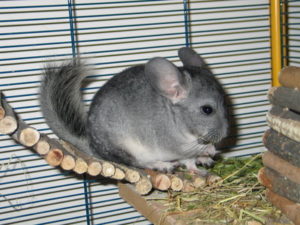Your pet should see a veterinarian and get a wellness checkup at least once per year. During the appointment, your pet’s veterinarian will look over your pet’s eyes, ears, nose, coat, teeth, gums and more. These checkups are important for your pet’s overall health, but they only happen once per year. This leaves a long span of time between visits to the vet. In the interval between annual wellness checkups, many pet owners perform home health checks.
These basic physical examinations are meant to help you stay tuned to your pet’s physical state. You may not be a licensed veterinarian, but once you’re used to your pet’s usual appearance, abnormalities become easy to spot. Performing home health checks on a monthly basis can help you catch illnesses and diseases before they worsen. Ultimately, this can help your pet get the treatment he or she needs in the early stages of a serious medical condition.
How to Perform a Home Health Check
If you’ve never performed a home health check in the past, you’ll need to know what to check during the exam.
- Weight. Pet obesity is a problem all over the country. Obese pets are at greater risk for contracting diabetes and cardiovascular disease. This increased risk can lead to a shorter lifespan, higher medical bills and reduced quality of life. You can help protect your pet from these problems by monitoring your pet’s weight. To find out if your pet is overweight, stand over your pet and feeling your pet’s sides. If you can’t feel your pet’s ribs, then your pet is overweight.
- Ears. Look in your pet’s ears for blood stains, mites, crust and wax buildup. Many dogs will easily get yeast infections in their ears. Look for redness around the ear canal.
- Nose. Your pet’s nose may be dry sometimes and runny at other times. Check your pet’s nose for wetness and dryness and look for signs of lumps, bumps and ulcers.
- Claws. Check your pet’s claws for signs that they need to be trimmed. If the claws are too long, trim them back. If you’re not sure how long your pet’s claws should be, try taking your pet to a professional groomer, or ask your pet’s veterinarian.
- Habits. Changes in your pet’s habits can be indicative that your pet is not feeling well. Make a note of how much your pet has been sleeping, eating, running, jumping and playing in the last several weeks. If your pet’s energy levels seem low, run it past your pet’s veterinarian.
- Skin and fur. Feel your pet’s skin and fur, looking for dryness, lumps, bumps and other changes.
- Teeth. Your pet’s teeth should be white, unchipped and without plaque. The gums should be pink and should not bleed. If your pet’s teeth are damaged or have spots or stains, this is a sign that your pet needs dental care from the local veterinarian. Take your pet to the vet for a proper dental examination.
Join the National Animal Supplement Council
The National Animal Supplement Council is an organization dedicated to the promotion of healthy living for pets through nutritional supplements. To help us in our mission and promote the cause, join us today. Sign up on our website by clicking here.

